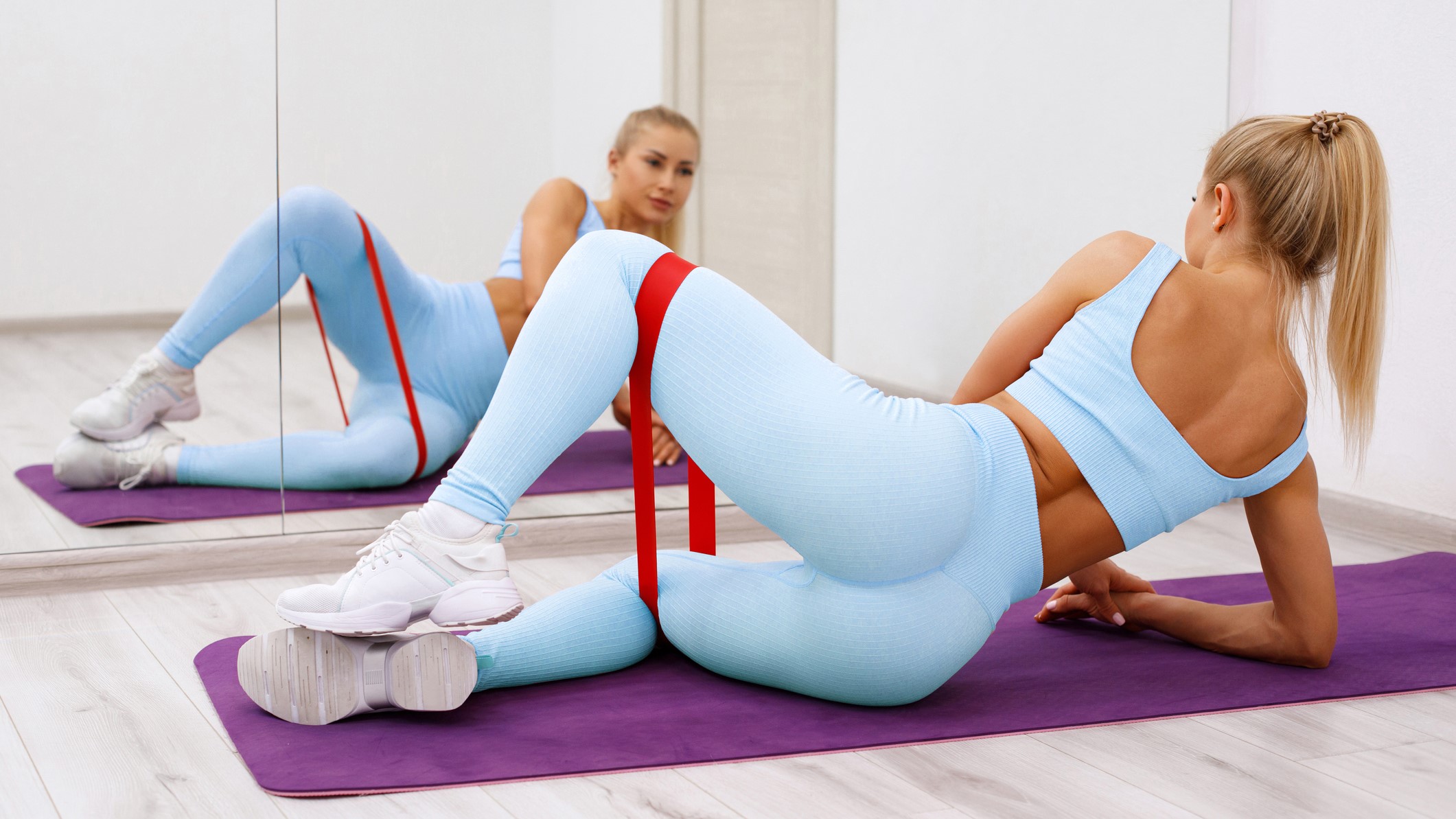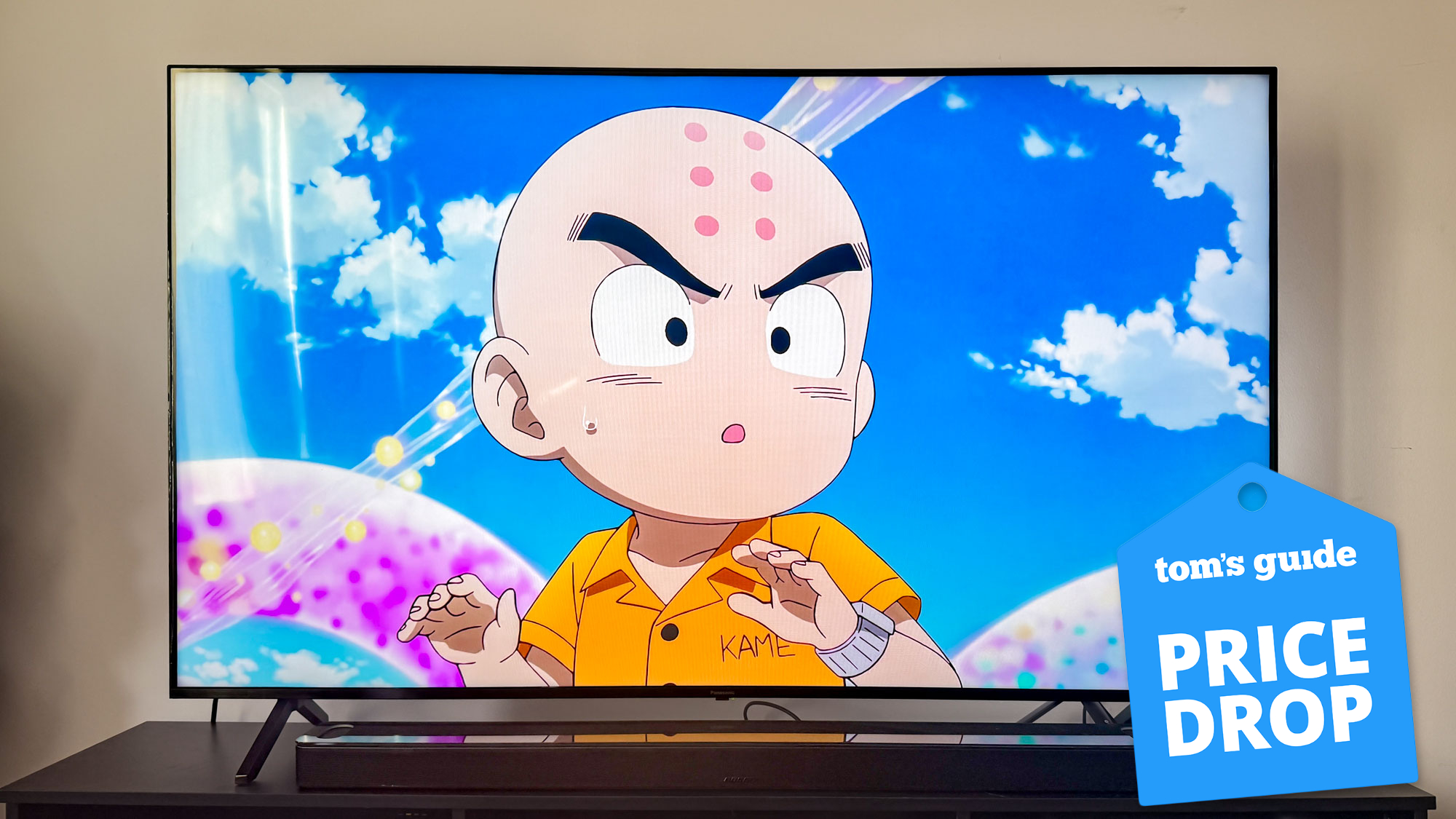I did resistance-band clamshells for a week — here's what happened

I don’t know why, but the clamshell seems a deeply retro exercise to me. I can easily imagine one of those legwarmers-and-leotards TV fitness instructors from the 1980s performing it while grinning madly into the camera. I have a new respect for them, as this is not a move that encourages grinning, madly or otherwise. But it sure works.
The clamshell is a technically uncomplicated exercise that strengthens your hips and gives your glutes an intensive workout, especially your gluteus medius, which is responsible for hip abduction (moving the leg laterally away from the body) and vital for hip stability. This fan-shaped muscle sits on the outside of the hip, at the top of the buttocks, though a fair portion of it is covered by that arch self-publicist called the gluteus maximus.
The clamshell gets its name from the shape your legs make when you do the move (to be fair, a little imagination is required) and while it sounds easy, and looks a little goofy, it won’t be long before you feel a serious burn. Your legs will thank you for your efforts – hip stability is vital for runners and for other active people involved in sports that demand some running. Knee and ankle pain is often caused by a lack of stability further up the chain, in the hips, so this move is great for preventing injury. You’ll also get a tip of the hat from your lower back, as pain in this part of the body can be alleviated by hip-strengthening moves.
How to do a clamshell
You don’t need any equipment to perform the basic variation, though I chose to do the exercise using one of the best resistance bands. If you’re doing the move for the first time and are new to working out, or coming back from injury, skip the band for now.

To begin, lie on your right side, with your feet, legs, and hips stacked on top of each other and your knees bent at 45 degrees. Rest your head on your right arm (or prop yourself up and rest your head in your hand) and engage your core to help you maintain stability during the move. Keeping your feet in contact with each other, raise your upper leg as high as you comfortably can without rocking your hips. Your lower leg should stay exactly where it is. Pause at the top of the move, then lower your leg back to the start position. That’s one rep. Aim for 30, then switch sides.
I did resistance-band clamshells for a week and this is what happened
I confess I went into this challenge feeling quietly confident that I’d have no problems. I’d have been loudly confident, but there was no one around to hear me, apart from my dog, who never listens to a word I say. I first performed a set with no band, to get an idea of how hard I’d find it. Feeling bold and complacent, I decided on the resistance band, which I placed around both legs, just above my knees. The clue is in the name – resistance band – but I was surprised by how much extra effort was needed. On day one, I found it difficult to raise my upper leg so my knee was pointing to the ceiling. The band, while not tight or thick, seriously upped the intensity – during the sets, I felt the move deep and high in my glutes, which I had not done when working without the band. If you want to really feel the muscle working, place your free hand on it. Your body does not look like you’re doing much, but that muscle is working up a sweat.
On day two, I took more care, performing each rep slowly and smoothly. I noted I was turning my upper body to follow the raised leg, which is, frankly, cheating. Watch for this: Only the top leg should be moving. I was surprised to find I was feeling the strain more in my right hip and glutes than in my left. Being right-handed and right-footed, I’ve always assumed my left side is weaker. (Later in the week I’d have a lightbulb moment. Not one of any great wattage, but important, nevertheless.)
Get instant access to breaking news, the hottest reviews, great deals and helpful tips.
Day three – during my second set, I felt a pull on the inside of my right thigh, around the groin, as I raised my right leg. Not a sharp pain, but a low-grade tug that told me I could pay attention now or pay the price later. I hadn’t expected to feel anything on the inside of my leg, so this was a mildly concerning development. I reduced the angle of lift on the right leg and got through the sets. My left side was making it look easy.
On day four, I found the source of the problem: me. Instinctively favoring my right side, I was pushing too hard, believing I could raise that leg higher than the left when the smart thing would have been to aim to raise both legs to the same height, an outcome that would have suggested each side was of equal strength and that my hips were in alignment. I was now being forced to question my assumption, so I did some single-leg squats later that day. My left knee remained directly in line with my foot, but when I did the move on my right leg, my knee drifted out and tried to leave the room. I then reflected on my long history of spraining my right ankle and, lo, the aforementioned bulb began to give off its dim glow. It's clear I have some work to do in the alignment department.
On day five, I learned an equally valuable lesson: If you’re using a rubber resistance band and you have hairy legs, do not do this move in shorts. You’ll very quickly be begging yourself for mercy.
The following day, I did the exercise after a run; it was much easier when my muscles were already warm and stretched. I did 40 on each side and felt good afterward.
I finished the week of clamshells with no more issues or revelations. For a move that is simple to do, it is surprisingly potent and, you never know, you may also learn an uncomfortable – but valuable – truth about your body. I’m going to keep doing them, if only because my left side doesn’t seem to know what my right side is doing. More to the point, it doesn’t seem to care.
Looking for more workout inspiration? Here are the best resistance band leg workouts to add to your routine, plus the best resistance band arm exercises to try.
John is a writer and editor based in London. He was worked for magazines such as Runner’s World, Men’s Health, Women’s Health and Cosmopolitan. A keen runner, what he lacks in ability he makes up for with enthusiasm and excuses.

